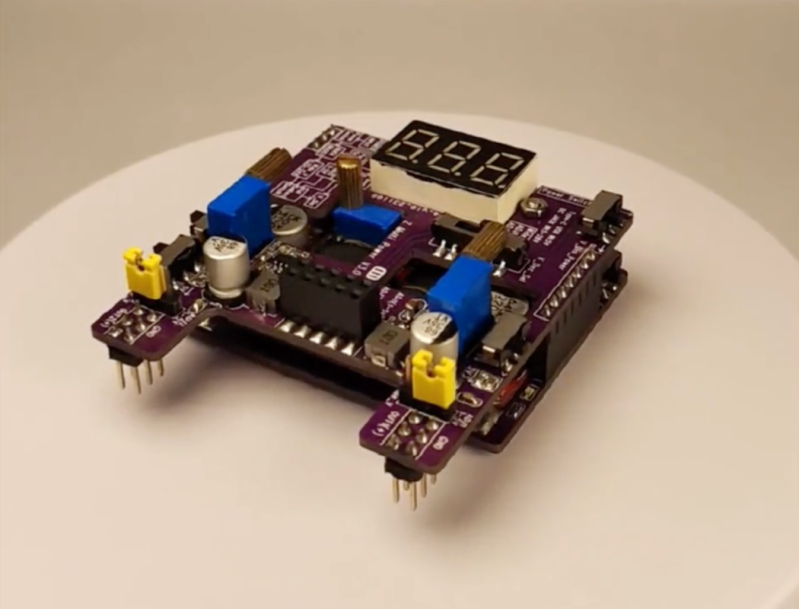For small electronics projects, prototyping a design on a breadboard is a must to iron out kinks in the design and ensure everything works properly before a final version is created. The power supply for the breadboard is often overlooked, with newcomers to electronics sometimes using a 9V battery and regulator or a cheap USB supply to get a quick 5V source. We might eventually move on to hacking together an ATX power supply, or the more affluent among us might spring for a variable, regulated bench supply, but this power supply built specifically for breadboards might thread the needle for this use case much better than other options.
The unique supply is hosted on a small PCB with two breakout rails that connect directly to the positive and negative pins on a standard-sized breadboard. The power supply has two outputs, each of which can output up to 24V DC and both are adjustable by potentiometers. To maintain high efficiency and lower component sizes, a switch-mode design is used to provide variable DC voltage. A three-digit, seven-segment display at the top of the board keeps track of whichever output the user selects, and the supply itself can be powered by a number of inputs, including USB-C or lithium batteries.
As an upgrade to one’s own janky power supply (seen here in a project to upgrade the BIOS in an old laptop) this is an excellent step up, and of course comes in a form factor that fits into our current design contest. Of course, if you need a little more current delivering capabilities, there are some modern ATX modifications that can provide a fairly robust benchtop supply without too much expense. You can find some more information about this power supply on the project’s Kickstarter page.


















“The power supply for the breadboard is often overlooked, with newcomers to electronics sometimes using a 9V battery and regulator or a cheap USB supply to get a quick 5V source. We might eventually move on to hacking together an ATX power supply, or the more affluent among us might spring for a variable, regulated bench supply”.
U wot m8? It’s not 1990s anymore. 15 years ago my very first order from TME was a bunch of passives, diodes, transistors, some ICs, breadboards, 0.1″ connectors, a decent multimeter and 30V, 5A lab power supply – and I was poor student living mostly on diet of beer and instant noodles (aka ramen).
All it took was not spending money on things which are non-essential like music, software and video games (all easily pirated) or monthly ticket for pubic transport (rode my own bicycle everywhere).
So…
This _IS_ an entry in The Business Card Challenge?
Hm… While I happen to be a backer for this Kickstarter, I don’t think this is the sort of publicity Toney would have wanted… as this ain’t a business card contest eligible project… As it is not business card sized lol. But is a handy direct plug in to breadboard multiple voltage rail PSU.
Bought a 5V & 3.3V similar configuration from China. The 3.3V side FAILED SHORTED TO THE 9V INPUT VOLTAGE!!! Needless to say, it took out all of my 3.3v devices.
I had a similar experience to this, and then when I read around online it seemed others had too – haven’t touched the things since. The one here looks a bit more involved so hopefully has a little more protection!
No information on hackaday.io (https://hackaday.io/project/196114-zero-multi-power-supply-v30-for-bread-board), but a Kickstarter campaign and completely off-topic. Perfect for a HaD 2024 Business Card Challenge article.